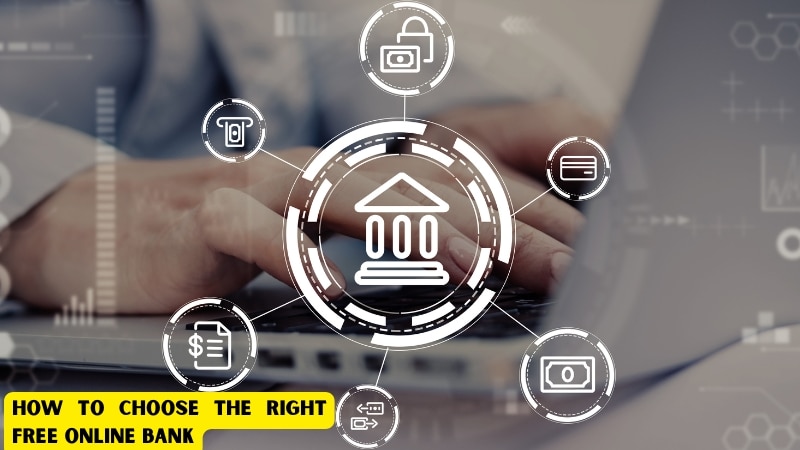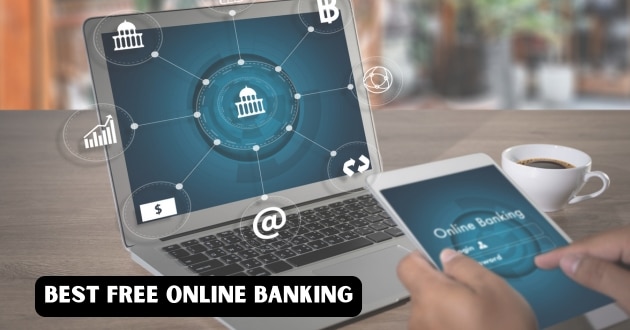Best free online banking is no longer a futuristic concept, it’s a financial necessity in 2025. As more consumers demand transparency, convenience, and control over their finances, traditional banks are struggling to keep up.
People are increasingly turning to online-only platforms that provide seamless digital experiences without the frustrating fees, long lines, or outdated interfaces common in legacy banking systems.
The appeal goes beyond just saving money. These platforms empower users to manage their money from anywhere in the world, track spending in real time, automate savings goals, and receive instant notifications for every transaction.
In a world where remote work, mobile access, and digital services are standard, best free online banking options offer unmatched efficiency and autonomy.
Moreover, as financial literacy spreads and digital tools evolve, users are becoming more selective about where they keep their money. They expect their banks to be more than just safe, they want them to be smart, responsive, and aligned with their lifestyle.
What Is Free Online Banking?
Free online banking refers to financial services provided entirely through digital platforms, such as mobile apps or websites, without charging traditional banking fees.
These services are designed to give users greater control over their finances while eliminating unnecessary costs like monthly maintenance fees, minimum balance penalties, or overdraft charges.
Unlike conventional banks, which often require in-person visits and involve complex fee structures, online banks operate with lower overhead. As a result, they can pass these savings directly to the customer, making them a popular choice for individuals who prioritize both convenience and affordability.
Furthermore, digital banks provide a range of tools that simplify financial management. For example, they often include automatic budgeting, real-time transaction alerts, and spending insights, features that help users stay on top of their finances with minimal effort.
Many platforms also allow you to open an account within minutes, offering immediate access to your funds and eliminating the bureaucracy associated with brick-and-mortar institutions.
Key Features to Look For
When searching for a bank that suits your needs, it’s important to look beyond “free.” The best platforms combine cost-efficiency with modern features and excellent user experience.
- Zero Monthly Fees and Hidden Charges: One of the most crucial features is a transparent fee structure. Look for banks that clearly disclose all potential fees, including those for ATM withdrawals, foreign transactions, or inactivity. Some platforms, like Chime, offer completely fee-free accounts with no surprises, making them ideal for users who want to avoid financial pitfalls.
- User-Friendly Mobile App: A sleek, intuitive mobile interface is vital for daily use. You should be able to check balances, move money, and track your spending with just a few taps. In fact, many of the best free online banking apps are designed with younger, mobile-first generations in mind, offering real-time push notifications, customizable widgets, and personalized dashboards.
- ATM Network and Fee Reimbursements: Even in a digital world, access to physical cash is still important. That’s why you should choose a bank with a wide ATM network or one that reimburses out-of-network ATM fees. Some banks, like Ally or SoFi, provide nationwide access to free ATMs and offer monthly reimbursements, which can be a game-changer for frequent travelers.
- Budgeting and Savings Tools: The ability to track spending and set savings goals directly in your banking app adds a whole new layer of control. Features such as automatic round-ups, spending limits, and expense categorization can help you make smarter decisions.
How to Choose the Right Free Online Bank
Since no two users are the same, choosing among the best free online banking options depends on your specific needs. Follow these tips:

- Define Your Priorities: Do you need travel-friendly features like currency conversion? Are you looking to build savings, or do you need budgeting tools? Defining these early will help narrow your options.
- Compare ATM Access: Many digital banks offer free withdrawals through ATM networks. If you withdraw cash frequently, check how many fee-free ATMs are available in your area.
- Look for FDIC or Global Equivalent Insurance: Make sure your funds are insured. U.S.-based accounts should be FDIC-insured, while UK users should look for FSCS protection.
- Try the App First: Many banks allow you to open a free account in minutes. Test the app before fully switching your finances, check if it’s intuitive and responsive.
Benefits of Using Free Online Banking
The shift to digital banking isn’t just about avoiding fees. It’s also about gaining flexibility, speed, and control over your finances.
- Lower Costs: Obvious but important, no monthly fees mean more money in your pocket.
- Greater Convenience: Handle all your finances from your phone, even outside regular banking hours.
- Faster Transactions: Digital platforms often process deposits and payments faster than legacy systems.
- Personalized Insights: Most apps provide analytics to track your spending habits, set financial goals, and more.
Potential Downsides to Consider
While the best free online banking services offer compelling advantages, they also come with a few trade-offs.
- No Physical Branches: Some users still prefer face-to-face service, especially for complex issues like loans or legal matters.
- Internet Dependence: If your device is lost, damaged, or without service, accessing your account may be difficult, unless you’ve set up secondary login methods.
- Feature Limitations: Some “free” accounts offer fewer features than premium versions. Always check the fine print before assuming all services are included.
Free vs. Traditional Banking: Which Is Right for You?
It ultimately comes down to lifestyle. If you value flexibility, real-time access, and cost-saving features, free online banking is probably the way to go. However, if you frequently need in-person assistance or cash-heavy services, sticking with a traditional bank might make sense, at least for part of your finances.
Many people today even use a hybrid approach, combining a digital bank for everyday spending and budgeting, and a traditional bank for long-term savings or mortgages.
Conclusion
Choosing the best free online banking platform in 2025 means understanding your own financial goals and comparing what each service brings to the table. From powerful apps and real-time data to zero fees and innovative savings tools, digital banking has made managing money easier and more affordable than ever.
Whether you’re a student looking for a simple checking account, a remote worker managing multiple currencies, or a parent teaching your teen about finance, there’s a digital bank tailored to your needs. Take advantage of the technology available, and start banking on your own terms today.
